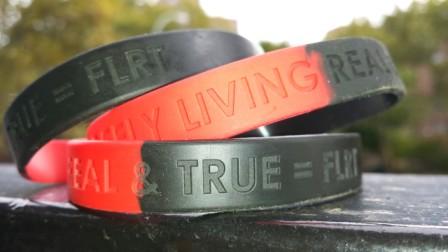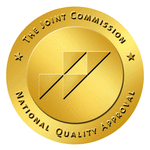We are ever-evolving, learning, growing creations. Yet, in spite of the fact that we are constantly changing, a normal reaction to change is fear. You would think that we’d be used to it by now and that it wouldn’t scare us anymore. After all, change is one of the only guarantees in life.
It is the unknown that causes this fear. Even if we know we’re moving in the right direction, unknown territory can hold us back and keep us stuck. For example, I was in a co-addictive relationship for nearly two decades. My husband was addicted to alcohol and drugs. As painful as that situation was, it became my comfort zone. I at least knew what to expect. As I began to make progress in my own recovery from co-addiction in relationships, the fear of change was my biggest barrier. Addiction and fear seem to go hand-in-hand.
Dealing With Fear In RecoveryHow many of us get stuck in unhealthy patterns because we are afraid of moving forward? We make the decision to stay in a bad situation over taking a chance on happiness. Why? Is it because we don’t have a crystal ball? Because we might end up in a worse situation? Because it might require leaving another person behind?
While my recovery was a process, I did eventually gather the strength to walk away from my husband and his addiction. As much as I yearned for my marriage to work, I finally surrendered to the fact that he was not ready to accept help. I did what I had to do to save myself. It was only after I gained the courage to take those steps that my husband accepted treatment. Amazingly, he has now been clean for over five years, and we are enjoying a healthy marriage.
5 Steps To Overcoming Fear In Addiction Recovery
It was my ability to overcome the fear of change that saved my family. No matter what obstacle you are currently facing in life, I urge you to harness your inner strength and move forward. Following are five tips for overcoming fear in addiction recovery.
1. Have faith.
Turning your problems over to a higher power can free you. Understanding that you are not supposed to have all of the answers can be a huge weight off your shoulders. You are here to live your life. You are not responsible for the choices that your loved one makes, and it is unhealthy for you to take those choice personally.
We do not always have control over the circumstances in our lives. Sometimes, we have to learn to give that control over to a higher power and have faith that there is a reason, a purpose, and a plan in place. The Serenity Prayer is a perfect reminder of this: God, grant me the serenity to accept the things I cannot change; the courage to change the things I can; and the wisdom to know the difference.
2. Be grateful.
When you focus on all of the wonderful gifts that surround you, it becomes easy to stay in a positive frame of mind. You have a choice. You can choose to focus on the negative, which will no doubt leave you feeling lousy, or you can choose to focus on the positive. Realizing all of the joys in your life will keep you feeling joyous.
We all desire a life filled with peace, comfort, and security, but if we only experienced those things we’d be cheated of so much. How would you ever feel success if you didn’t have some struggles to overcome? How would you know true joy if you never felt sadness? Would you want to go your entire life without ever feeling exhausted from a hard days work? Never having the feeling of butterflies in your stomach? Never experiencing the release of anger? Never feeling the fear of vulnerability? You can learn to appreciate every part of your life, even the challenges.
3. Reach out for help.
When you’re lacking faith or strength reach out to a family member or friend. Turn to the people who care about you and let them help to lift your load. By allowing yourself to be vulnerable and open up, you might just be provided with the exact help you need.
One of the best forms of support available, for those of us involved with an addict, is Al-Anon. If you haven’t visited an Al-Anon meeting before, I encourage you to seek one out. Al-Anon offers the guidance and support needed to keep you on track. Through their program you will be encouraged to find a sponsorѕa member who has been working the program for some time and can help you with daily struggles one-on-one. It’s truly an incredible support system available to anyone; all it takes is tracking down a meeting and showing up.
4. Create a clear vision.
See your ideal situation clearly in your mind. The method of visualization has been proven to work. One of your most powerful tools is your imagination. By creating a clear image in your mind, you set forth the energy needed to bring your dreams to life.
One of the greatest benefits to using visualization is the awareness of control that it offers you. Being in a relationship with an addict can leave you feeling powerless. By learning to use the tools of visualization, you start to feel a sense of mastery over your own life, which in turn increases your self-esteem and hopefulness for the future.
5. Learn to say “yes”.
It’s time to let go of false fears. Learn to say yes to fun, adventure, new friendships, and taking risks. There are no perfect answers, perfect relationships, or perfect lives. We are meant to make mistakes, take wrong turns, and make bad decisions. They are all a part of life. When we learn to say “yes” we open ourselves up to love, learning, growing, and life.
As you make your way along your new path you may feel some discomfort. Your stomach may flip-flop a bit as you try a new approach. The sensation of fear might spread throughout your body whenever you put yourself into an unfamiliar situation. It’s important to stay in tune with your body’s reactions, but sometimes it’s hard to tell the difference between your instincts giving you a warning and the simple response to change.
Learn to think of these reactions to change as “Growth Alerts”. The next time you’re feeling uneasy, ask yourself if there is a reason to be wary, or is it a signal that you are about to do some growing? Sometimes you have to push your way past the crowd of fear in order to reach the front row seats of joy!
Photo credit: Damien Moureaux




 RSS Feed
RSS Feed
